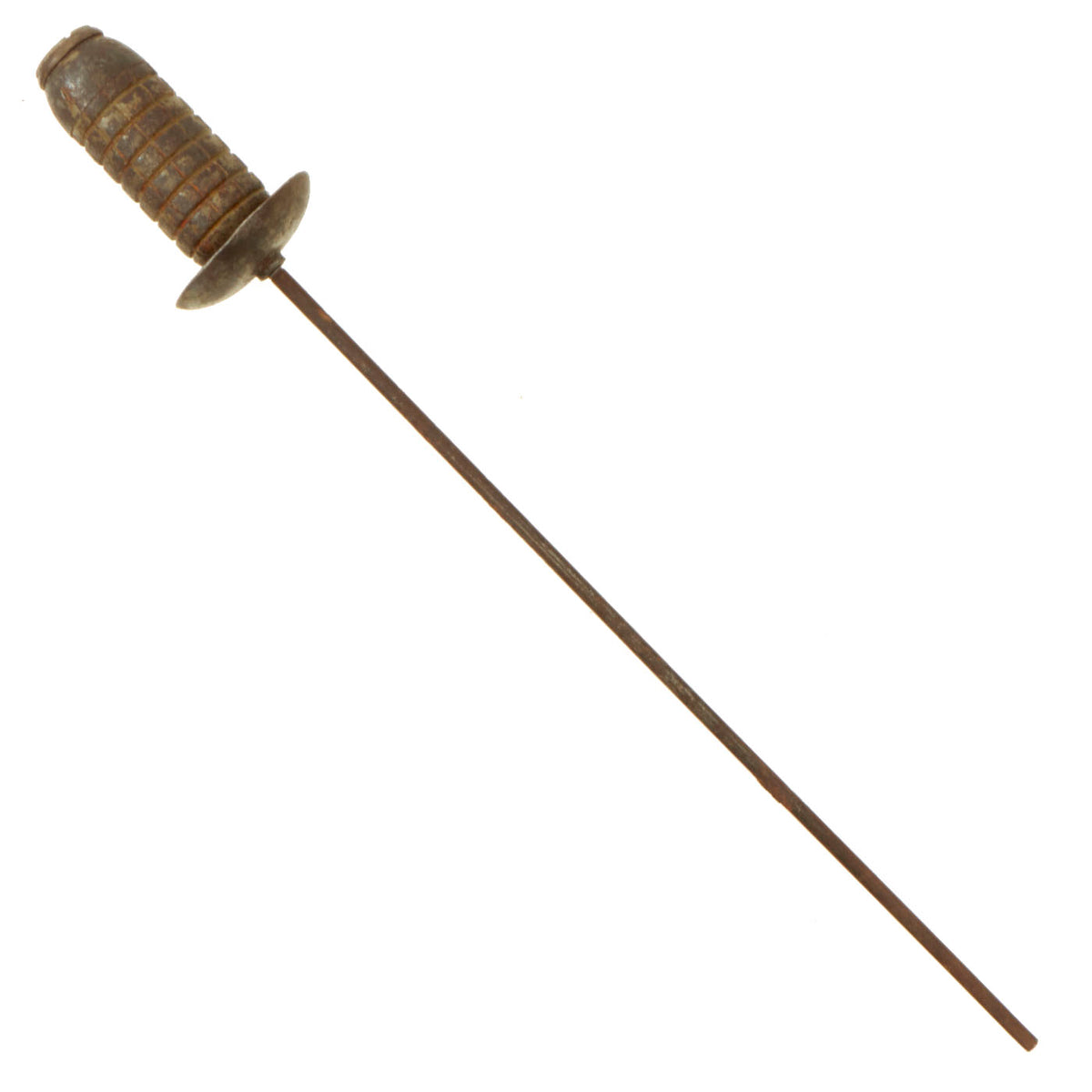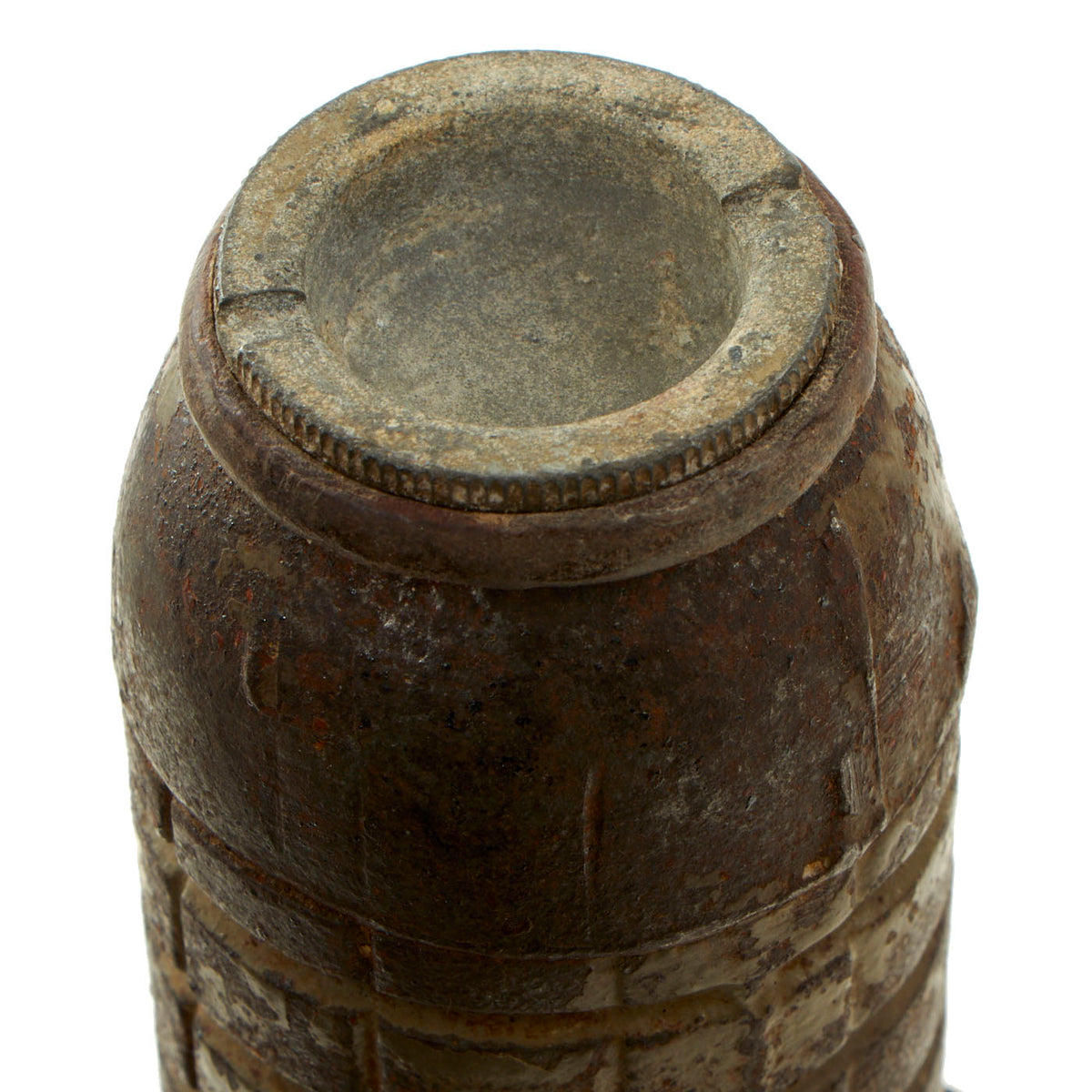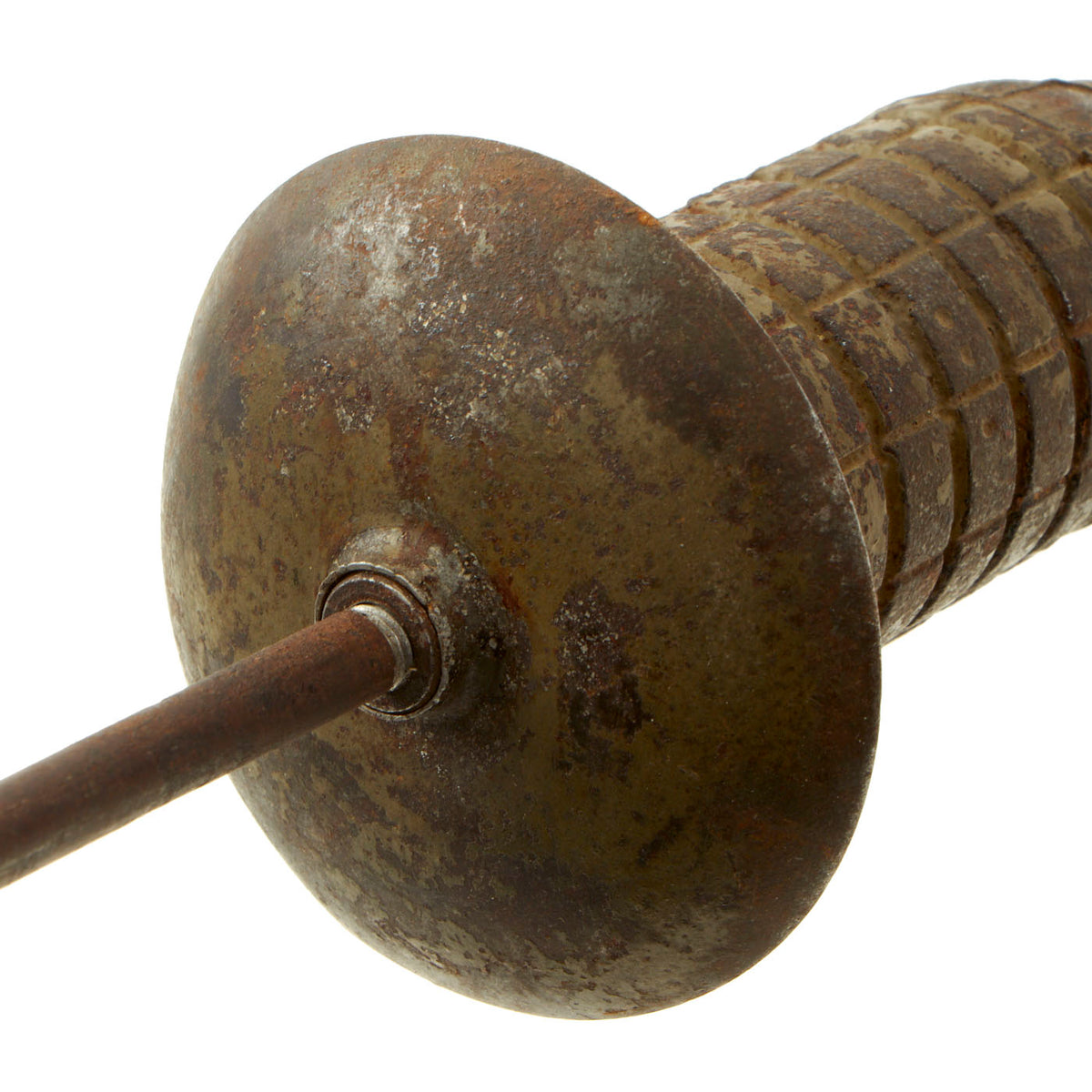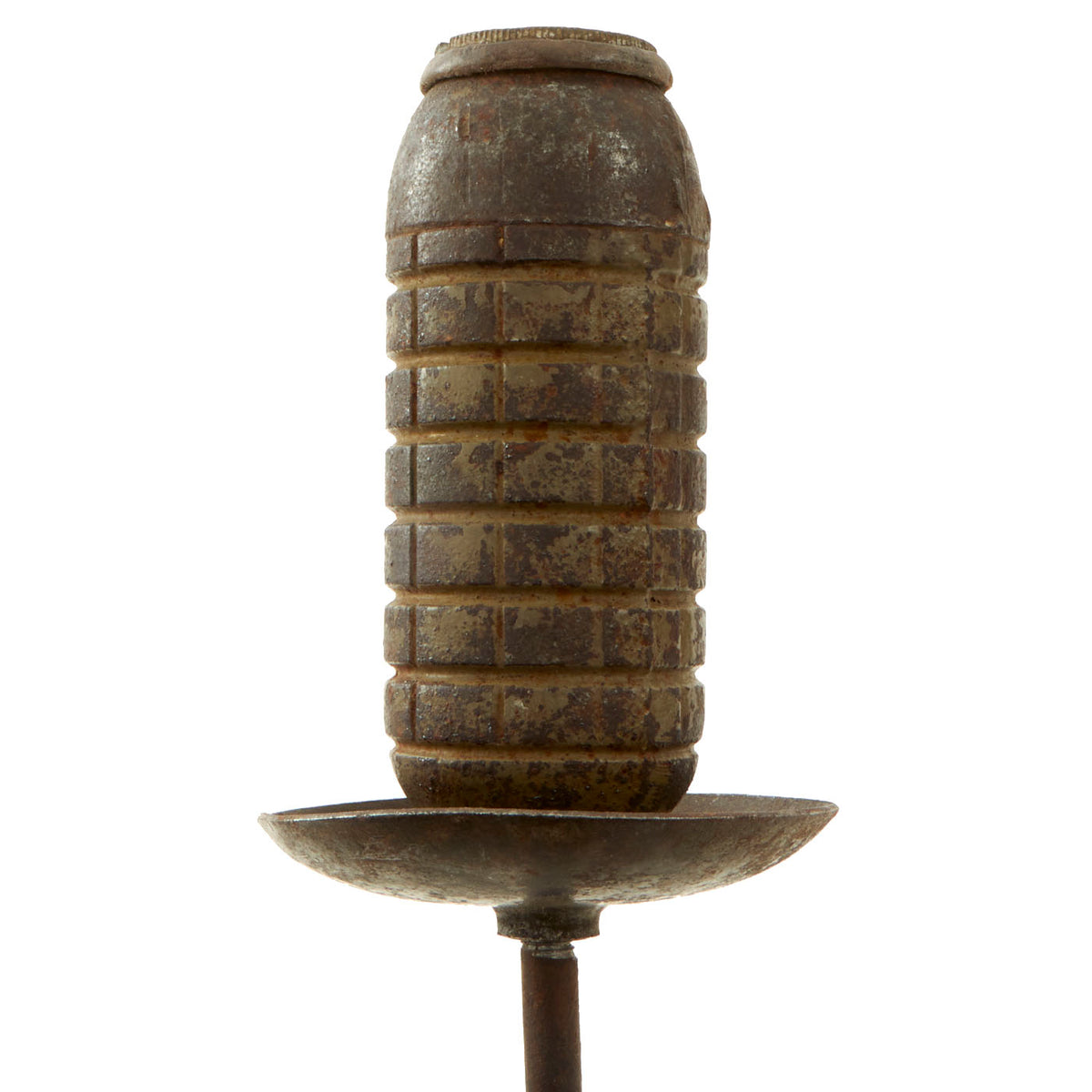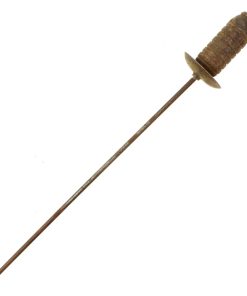Original German WWI Karabingranate M1914 Rifle Grenade with Range Cup and Rod – Inert Original Items
$ 595,00 $ 178,50
Original Item: Only One Available. This is a very nice Karabingranate M 1914, as used during the Great War. This grenade is completely inert as specified by the ATF, and cannot be converted to an explosive device.
This Karabingranate M 1914, with its saucer shaped range cup and rod, is extremely hard to find. German WW1 Rifle Grenades of any ilk are rare, however, one with these pieces is much more so. Most are missing the rod, the cup, or both. This example is complete minus the fuse. Of all steel and brass construction it was launched using a special wood tipped cartridge that could effectively lob a grenade from one trench across No-Mans Land into the Trenches of the enemy.
The iron body is a standard fragmentation pattern, and upon detonation would break into fragments inflicting terrible injury.
Still in excellent condition and fully INERT this rare German WW1 Rifle Grenade is ready to display.
History of the German WW1 Karabingranate M1914
The Karabingranate M 1914 was the successor to the M1913, and was designed specifically to overcome to shortcomings of the 1913. The main problem with the model 1913 that it was very aerodynamic, making it too effective a projectile, which caused it to sink too far into the ground on impact to be very effective. Developments led to the birth of a less aerodynamic and more massive grenade that would limit the penetration in the ground at impact, the rifle grenade M 1914 .
This variation was made keeping constant the total weight to keep the firing table unchanged, and therefore admitting a small reduction of the explosive charge. An optional steel cupola could be added at the base of the body to reduce the range, depending the way it was mounted (25% or 50%).
The ignition system was completely different from the one of the 1913 model. Entirely confined into the brass piece screwed at the top of the projectile, it was this time a real percussion fuse with inertia arming system (inertia block and springs). At the departure (and after the safety pin had been removed), inertia force pushed back a ring, unmasking the percussion pin. From the outside, this ‘armed’ condition was recognized by the elevated position of the fuse head, which also gave it a more effective detonation force.
Another advancement was that the detonator was now inserted inside a high explosive relay-charge, itself included into the body explosive load. This characteristic provided that grenade an internal organization surprisingly similar to some artillery shells used in WWI.
Despite these improvements, none of the 1913 or 1914 rod grenades went ‘popular’ within German infantrymen, the need of changing the rifle ammunition to blank type to use them being a frequent source of fatal accidents.
Fast Shipping with Professional Packaging
Thanks to our longstanding association with UPS FedEx DHL, and other major international carriers, we are able to provide a range of shipping options. Our warehouse staff is expertly trained and will wrap your products according to our exact and precise specifications. Prior to shipping, your goods will be thoroughly examined and securely secured. We ship to thousands clients each day across multiple countries. This shows how we're dedicated to be the largest retailer on the internet. Warehouses and distribution centres can be located throughout Europe as well as the USA.
Note: Orders with more than one item will be assigned a processing date depending on the item.
Before shipping before shipping, we'll conduct a thorough inspection of the items you have ordered. Today, the majority of orders will be delivered within 48 hours. The delivery time will be between 3-7 days.
Returns
The stock is dynamic and we cannot completely manage it because multiple stakeholders are involved, including our factory and warehouse. So the actual stock may alter at any time. It's possible that you may not receive your order once the order has been made.
Our policy is valid for a period of 30 days. If you don't receive the product within 30 days, we are not able to issue a refund or an exchange.
You can only return an item if it is unused and in the same state as the day you received it. You must have the item in its original packaging.
Related products
Uncategorized
Uncategorized
Uncategorized
Uncategorized
Uncategorized
Uncategorized
Uncategorized
Uncategorized
Uncategorized
Australian WWII Owen MK1 Machine Carbine SMG Custom Fabricated Replica with Sling Original Items
Uncategorized
Uncategorized
Uncategorized
Uncategorized
Uncategorized
Armored Burgonet Helmet & Polearm from Scottish Castle Leith Hall Circa 1700 Original Items
Uncategorized
Uncategorized
Uncategorized
Armoured Fighting Vehicles of the World: AFVs of World War One (Hardcover Book) New Made Items
Uncategorized
Uncategorized

